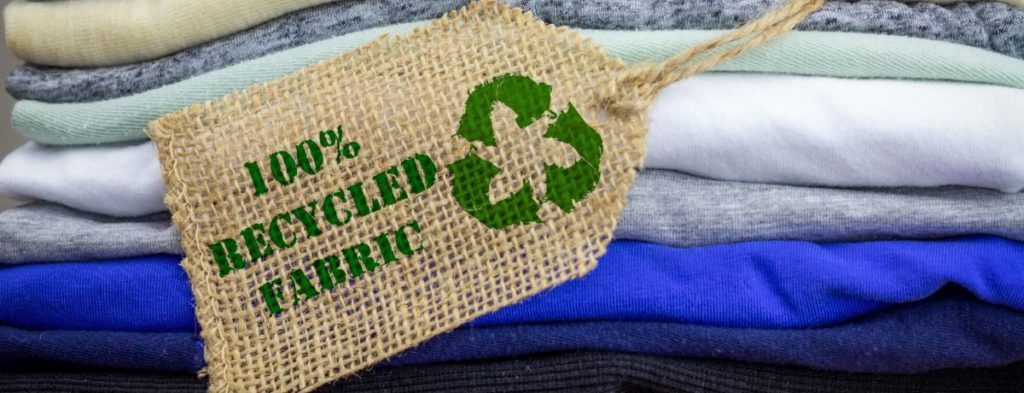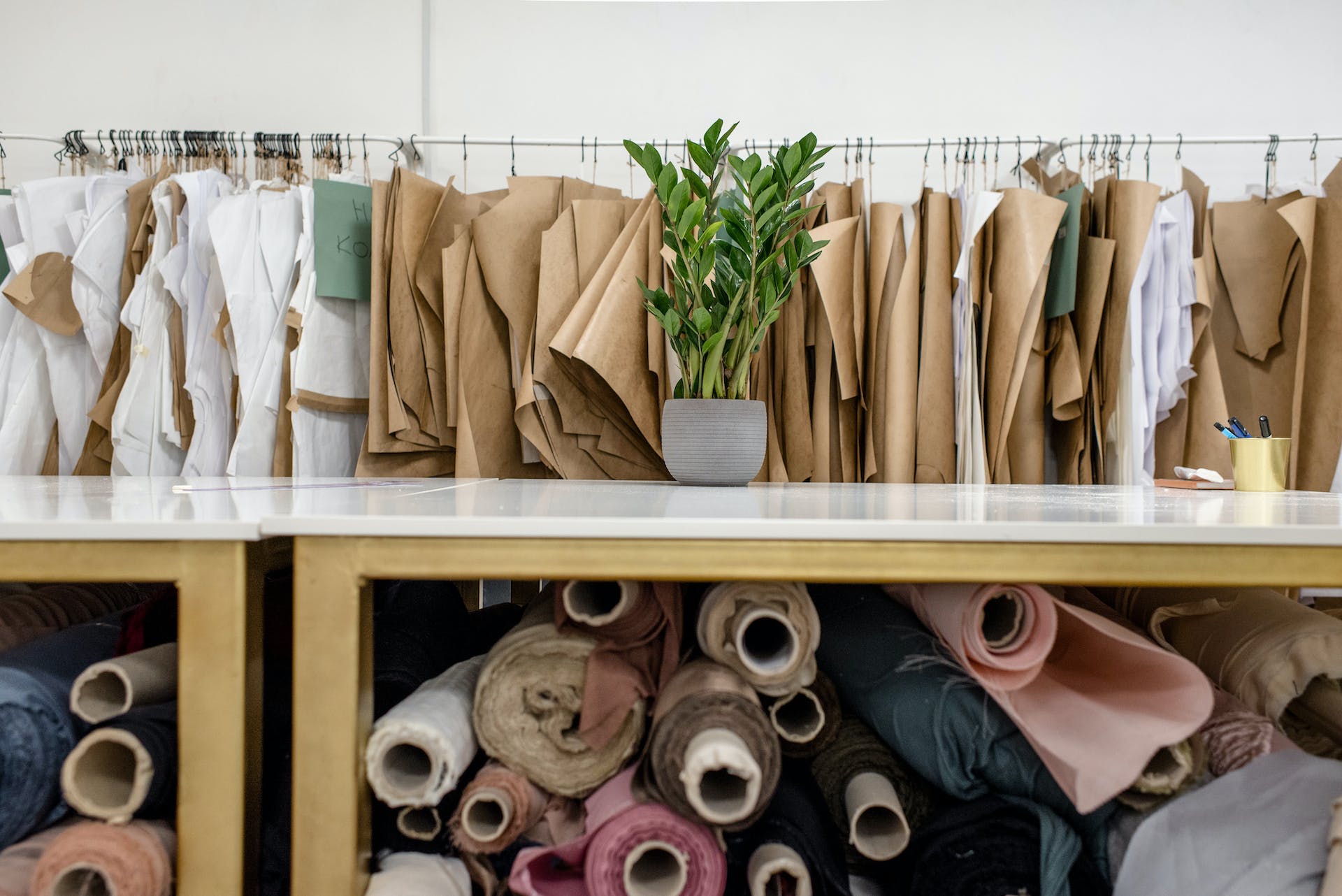|
|
In today’s world, where the fashion industry continually churns out new trends and styles, clothing has become more accessible. Yet, this convenience comes at a cost, contributing to a staggering amount of textile waste. The need for sustainable practices in fashion has never been more pressing, and one crucial solution is clothing recycling.
In this guide, we will unveil the textile recycling process, shedding light on how discarded garments can be transformed into something new and reducing the environmental impact of our fast-paced fashion culture. Join us on a journey to understand how clothing recycling works and the positive changes it can bring to our world.

Understanding Textile Recycling: Giving Old Clothes New Life
Textile recycling is a sustainable practice that involves repurposing used clothing and textiles to create new products. It’s a multifaceted process encompassing the collection, sorting, and processing of textile waste, all aimed at reducing the environmental impact. To truly appreciate the significance of textile recycling, let’s delve deeper into the concept and explore why it’s an essential component of environmental stewardship.
Textile Recycling: A Second Chance for Fashion
Textile recycling is about diverting textiles from the waste stream and granting them a second life. This second life can manifest in various ways, such as reusing clothing, transforming it into different products, or breaking it down into raw materials to create entirely new textiles.
For example, a worn-out pair of jeans can be transformed into fashionable denim accessories or upcycled into home decor items, offering a creative and sustainable approach to repurposing.
Why Textile Recycling is Vital for Our Planet
The importance of textile recycling cannot be overstated regarding environmental conservation. Here are some compelling reasons why it’s a crucial practice:
- Resource Conservation: Textile production demands significant resources, including water, energy, and raw materials. Recycling textiles helps reduce the need for virgin resources, conserving these precious inputs and lessening the strain on the environment.
- Energy Efficiency: The manufacturing of new textiles consumes substantial energy. Repurposing old textiles typically requires less energy, contributing to overall energy efficiency and reducing the carbon footprint associated with the fashion industry.
- Pollution Reduction: Textile production is notorious for its pollution, from chemical dyes to wastewater discharge. By opting for recycling, we can curtail the release of harmful pollutants, making the fashion industry more eco-friendly.
Textile Waste Challenge: Overloading Landfills
Waste production is going up worldwide, and it’s not slowing down. By 2050, the amount of solid waste we make in cities is expected to be 70% more, reaching 3.4 billion metric tons. This happens because more people live in cities, the world’s population keeps growing, and people are buying more things, including clothes.
The fashion industry’s rapid pace and consumer culture contribute to a massive volume of textile waste. Millions of discarded clothing each year find their way into landfills. This accumulation poses a severe problem due to the non-biodegradable nature of textiles. Clothing takes a long time to decompose, resulting in overflowing landfills and the emission of harmful greenhouse gases.

For instance, each year, about 59,000 tons of clothes arrive at Chile’s Iquique port. These clothes come from places like China, Bangladesh, and other parts of the world before reaching Chile. Many of them are resold in Latin America, but a significant portion, around 39,000 tons, cannot be sold and ends up in landfills in the nearby desert of Iquique.
The issue is that these clothes are not biodegradable and contain chemicals, making them unsuitable for regular landfills, as explained by Franklin Zepeda, the founder of EcoFibra. This company uses discarded clothing to make insulation panels.
One way to mitigate this predicament is through effective textile recycling programs that redirect clothing from landfills, reducing the burden on these waste disposal sites and diminishing their environmental impact.
How Clothes Are Recycled: A Sustainable Transformation
The journey of recycling clothes involves several crucial steps to ensure the effective sorting, processing, and repurposing of materials. From collection to final reuse, here’s a detailed breakdown of how clothes can be recycled:
1. Collection and Sorting:
- Collection begins with gathering used clothing, and the initial sorting is a pivotal step. Textiles are separated based on various criteria: type, quality, and condition.
- Wearable garments are carefully assessed and set aside for donation or resale, extending their lifecycle and reducing waste.
- Items damaged or unsuitable for traditional wear are earmarked for recycling.
2. Methods of Reusing Textiles in the Fashion Industry:
- Textiles in good condition often find a second life in the fashion industry through several channels:
- Resale: Clothing in excellent condition can be resold through thrift stores, consignment shops, or online platforms, giving it a chance to be worn by new owners.
- Donation: Charitable organizations and clothing banks accept gently used garments to distribute to those in need or to resell in support of their missions.
- Upcycling: Creative designers and DIY enthusiasts may transform old clothing into new, trendy fashion items.
- Vintage Fashion: Certain well-preserved vintage pieces become highly sought-after and collectible.
3. Exploring the Textile Recycling Process:
- Textile recycling encompasses various methods based on material type and intended end-use. One prevalent approach is mechanical recycling, which includes:
- Shredding: Textiles are shredded into smaller pieces to break into more manageable components.
- Re-Spinning: After shredding, the smaller pieces are re-spun into new yarns or fabrics, creating a sustainable source of materials.
- Chemical Recycling: This method involves breaking down textiles at a molecular level, enabling the extraction of high-quality fibers for new products. This approach is efficient for challenging materials like blended fabrics.
By understanding and implementing these recycling processes, we can significantly reduce the fashion industry’s environmental impact, minimize textile waste, and promote a more sustainable approach to clothing production and consumption.
Revolutionizing Fashion Through Recycling
H&M’s recycling machines are a testament to the brand’s commitment to reducing textile waste and promoting a circular economy. These machines are strategically placed within select stores, offering a convenient and engaging solution for customers looking to dispose of their unwanted garments responsibly. The straightforward process encourages shoppers to participate in the brand’s sustainability efforts actively.
Where to Recycle Clothes: Sustainable Options

When recycling your unwanted clothes, there are several eco-friendly options to consider. Here are some examples of where you can recycle clothes:
1. Donating Clothes:
- Donating your clothes to charitable organizations or local shelters is a compassionate choice. These organizations often distribute clothing to those in need or sell them to fund their missions.
- Example: Donating gently used winter coats to a local coat drive can help keep someone warm during the cold months.
2. Thrift Stores:
- Thrift stores play a vital role in textile recycling. They accept used clothing donations, and these items are typically resold at affordable prices, extending the lifecycle of the garments.
- Example: Donating a pair of jeans to a thrift store, where someone else can purchase them at a fraction of the cost of new jeans.
3. Repurposing at Home:
- Get creative by repurposing your clothing at home. Transform old items into new, useful products or engage in crafting projects.
- Example: Turning worn-out t-shirts into cleaning rags or cutting them into strips for DIY fabric jewelry.
4. Clothing Swap Events:
- Organize or participate in clothing swap events with friends or local communities. These events allow you to exchange clothes you no longer want for items that are new to you.
- Example: Swapping your rarely-worn formal attire for casual clothing that better suits your lifestyle.
5. Upcycling Workshops:
- Attend upcycling workshops or classes that teach you how to repurpose your old clothes into trendy, one-of-a-kind pieces.
- Example: Learning to convert an old pair of jeans into a fashionable denim skirt through a guided upcycling workshop.
6. Clothing Recycling Centers:
- Many areas have dedicated clothing recycling centers where you can drop off your unwanted clothes. These centers ensure that textiles are properly processed and repurposed.
- Example: Depositing old, stained bed linens at a clothing recycling center, where they may be transformed into insulation material.
Recycling your clothes reduces textile waste and contributes to a more sustainable and environmentally friendly approach to fashion. By exploring these options, you can positively impact your local community and the planet.
The Importance of Recycling Clothes: A Greener Fashion Future
The fashion industry is a force to be reckoned with, but it’s also a sector that significantly impacts the environment. From the extraction of raw materials to the production and disposal of garments, it leaves an undeniable mark. Recycling clothes emerges as a crucial solution, offering various benefits to counteract the environmental consequences of the industry. Here’s why it’s important:
1. The Significant Impact of the Fashion Industry on the Environment:
- The fashion industry is notorious for its relentless cycle of production and consumption. This fast-paced approach leads to waste generation, substantial resource depletion, and pollution.
- Example: The fashion industry is the second-largest consumer of water worldwide, contributing to water scarcity in various regions.
2. Reducing Waste and Conserving Resources through Textile Recycling:
- Recycling clothes is a powerful means to combat waste and resource depletion.
- When clothes are recycled, less textile waste ends up in landfills, decreasing the environmental burden.
- The process of recycling also conserves valuable resources such as water, energy, and raw materials.
- Example: Recycling a ton of textiles can save around 700 gallons of water and prevent the release of harmful chemicals into the environment.
3. How Recycled Clothing Contributes to a More Sustainable Future:
- Recycled clothing isn’t just about repurposing old garments and shaping a sustainable future.
- By reusing materials through recycling, we reduce the demand for new textiles, thereby mitigating the environmental impact of textile production.
- This practice significantly minimizes the carbon footprint associated with the fashion industry, as less energy and resources are required to create new garments.
- Example: Upcycling old denim jeans into stylish bags or accessories demonstrates how recycled clothing contributes to a circular economy and sustainable living.
Embracing textile recycling is an eco-conscious choice and a proactive step toward a greener planet. It empowers individuals and industries alike to rethink how clothing is produced and disposed of, fostering a more sustainable and responsible fashion future.
Frequently Asked Questions
Clothing can undergo recycling through various methods, including textile sorting, fiber recycling, and chemical processes. These techniques transform old garments into new products, reducing waste and conserving resources.
Recycled clothing is repurposed into new clothing items, bags, accessories, or industrial materials. It contributes to a more sustainable and circular approach to fashion.
Not all clothing can be recycled equally. Natural textiles like cotton, silk, and wool are more easily recyclable than synthetic fabrics like polyester or nylon. The ease of recycling depends on the material’s composition.
Textiles are sorted based on color, fabric type, and condition during the recycling process. This sorting step ensures that materials can be processed efficiently and effectively.
The first step in textile recycling is the sorting of textiles into different categories. This is often done manually or with the assistance of machines to categorize garments properly.
Fabrics can be recycled through either mechanical or chemical processes. Mechanical recycling involves shredding the fabric into smaller pieces, then spun into new fibers. Chemical recycling uses solvents to dissolve the fabric and create fresh fibers.
Zippers, buttons, and other accessories are typically removed from clothing before recycling. They can be either reused or recycled separately, depending on the recycling facility’s procedures.
Every year, millions of tons of textile waste are generated globally, contributing to the growing textile waste problem. It’s a significant environmental concern.
Yes, there are clothing recycling programs offered by various organizations and retailers. For example, Green America and retailers like H&M have recycling initiatives where customers can bring their old clothes for recycling.
Instead of discarding old clothes, consider donating them to charities, selling them as secondhand clothing, or participating in recycling programs provided by retailers or textile recycling partners. These options help reduce waste and support sustainability.
Conclusion
In conclusion, clothing recycling is a beacon of hope for the fashion industry and environmental sustainability. Through our exploration of the textile recycling process, we have unveiled the intricate journey that discarded garments embark on, transitioning from waste to valuable resources. Understanding how clothing is recycled sheds light on the practical aspects of textile recycling and highlights its profound importance.
By reusing, repurposing, and transforming old clothes, we reduce the demand for new materials, conserve valuable resources, and minimize the fashion industry’s environmental impact. The significance of textile recycling extends beyond waste reduction; it leads to a greener, more circular economy and a brighter, more sustainable future.
As consumers, individuals can actively participate in this transformative journey by choosing to recycle their clothes, explore creative ways to extend the life of their garments and support recycling initiatives. Together, we can redefine the fashion industry and foster a world where clothing is stylish and eco-conscious, creating a harmonious balance between our love for fashion and our responsibility towards the planet.












